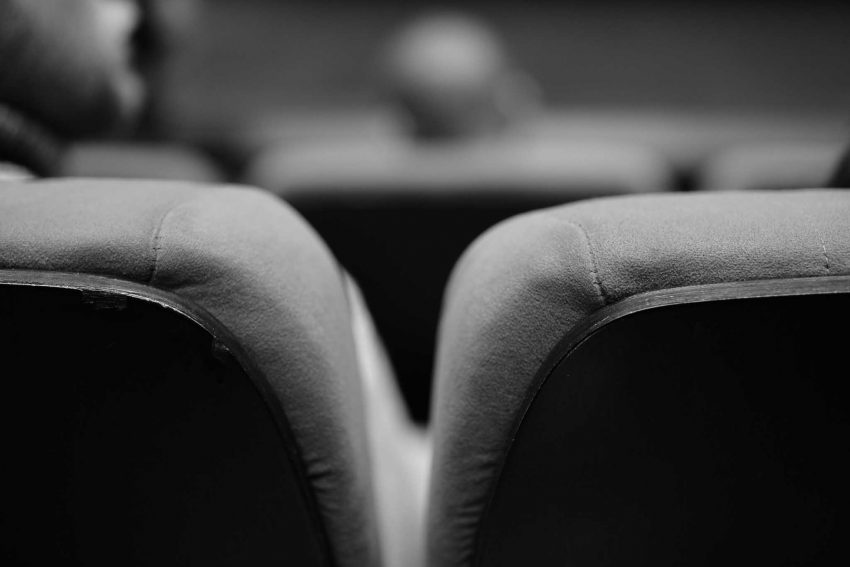
Reflections on two short documentaries. A simple idea presented at Camerimage 2016: who makes the choice of seeing? by Axelle Coquelet
Unseen—the Lives of Looking (Director and Cinematographer Dryden Goodwyn, UK)
and How to Destroy the Time Machines (Director Jacek Piotr Bławut, Cinematographer Adam Palenta, Poland)
Bydgoszcz, Poland. Camerimage is the marvelous international festival dedicated to the art of cinematography. It is all about cinematographers, and even more so when you look at the documentary program where most of them are also directors. What they offer is often a literal vision of their own world. In those cases, the communication with the viewer, the mise en scène, is almost entirely contained in the cinematography: framing, angle, focal lengths, movement. I think it is one of the main interests of documentaries: how these directors see the world and how they manage to communicate it through the cinema screen.
How do other people see the world? How does it affect them ? And how do they communicate it? The quest of Unseen: the lives of looking director Dryden Goodwyn is to explore this enigma. Dryden Goodwyn reached three people whose look is oriented very differently, which makes each of them uniquely conscious of their place in the world.
The first character, an eye-surgeon, is looking very deeply at the world of infinitely tiny things in great detail through a microscope. The second character is an astronomer studying the surface of Mars, millions of miles away. He is focused on the cosmos and the infinitely wide. He explores a very precise 3D map of Mars which he constructs thanks to photos taken by the Curiosity rover. It becomes his everyday landscape so much that he sometimes completely forgets that it is another planet. The third part of the movie focuses on a London lawyer who is looking at our society, that is to say “the surface” of the world, as Dryden Goodwyn explained in the Q&A session after the screening. This last character analysis of the world depends on how we have come to organize it, our rules, laws and institutions.
Step by step, the portraits of these three characters reveal the main statement of this short movie. Everything we see and think is mediated through something: microscope, photography, institutions or lens, camera, screen. The director doesn’t forget to highlight his own involvement through his drawings and also through his cinematography. In the beginning, even though his main focus is on his own drawings, his own interpretation of what he sees, he also fulfills our illusory need to see its subjects without his intervention. That’s why he edits alternatively his drawing and the filmed portrait of his model.
The more the film evolves, the less Dryden Goodwyn leaves us with the illusion of this “direct” point of view. Fulfilling our curiosity, he tilts from his paper to his model, but very briefly and always out of focus. This blurring means everything: the choice to see does not belong to the viewer. What prevails is the director’s choice of showing.
In How to Destroy the Time Machines, director Jacek Piotr Bławut and cinematographer Adam Palenta also use blurring as a cinematographic choice that enhances the meaning of the movie. The very narrow depth of field is relevant to illustrate the finesse and accuracy of the sounds Jeph Jerman, the main and only character, listens to and records. But it is also the choice of not seeing accurately the context, the whole action. The camera seems to wait for its subject (the moving hand, the turning rocks) to enter into the tight focus field. The focus is fixed and then left to luck, as if “destiny” had to choose what is relevant to see or not to see. The blurring becomes a new way of framing. The cinematographer does not always choose the obvious center of attention, and sometimes steps aside the whole subject to just seize a short glimpse of it. It reminds the viewer that what we focus on is a part of a whole that can never be photographed entirely. Every frame is an on-the-spot choice of the cinematographer.
This is the main lesson told, repeated and renewed at every screening in Camerimage: each cinematographer has his own way to shoot, and that’s what we’re here to see. Our attention is traditionally directed towards the focus point, but sometimes the imagination flourishes in the blurring. I guess that’s why my Polish host told me about a photograph of a blurred girl in the middle of a dance stage that he took. He said, “It is my kind of creativity.”
Axelle Coquelet is a second year Cinematography student in La CinéFabrique, the French Cinema school in Lyon. The photo of the Camerimage theater in the Opera Nova was taken by classmate Sarra Barira. A dozen students from La CinéFabrique were invited to attend Camerimage through the generosity of Transvideo, Aaton and K5600.







